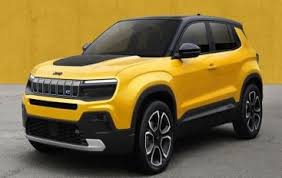The Rise of Stellantis
In an era where automotive manufacturers are racing towards sustainability and electrification, Stellantis stands out as a juggernaut in the automotive industry. Formed in January 2021 through the merger of Fiat Chrysler Automobiles and PSA Group, Stellantis encompasses a vast portfolio of brands, including Jeep, Ram, Peugeot, and Citroën, among many others. With the combined forces of two historic companies, Stellantis has set its sights on not only maintaining competitiveness but also spearheading innovation across its vehicle line-up.
Commitment to Sustainability
The automobile industry has been under increasing pressure to reduce carbon emissions and shift towards more sustainable practices. Stellantis has taken this challenge head-on, committing to investing more than €30 billion by 2025 towards electrification and software development. This includes plans to launch over 75 battery-electric vehicles and aim for 70% of its U.S. sales to be low-emission vehicles by 2030.
A striking example of this initiative is Stellantis’s ambitious goal to achieve a net-zero carbon footprint by 2038. This is no small feat, considering the size and complexity of its global operations. “Stellantis is not just adapting to market trends; it’s setting the pace for what the industry should look like in the future,” says automotive analyst Sarah Blake. “Their proactive approach to electrification and sustainability could become a benchmark for other automakers.”
Technological Innovations and Digital Transformation
Beyond electrification, Stellantis is transforming the driving experience by investing in advanced connected vehicle technologies. Their strategic partnerships with tech giants aim to enhance user experiences inside vehicles and make driving safer and more enjoyable. For instance, Stellantis announced collaborations with Waymo and Amazon to integrate autonomous driving features and smart technology into their vehicles.
The introduction of the STLA Smart Cockpit combined with their multilayered software strategy reflects an understanding that the future of personal transportation will be as much about connectivity and user interface as it is about horsepower and torque. As the company positions itself as a tech-driven automaker, it remains cognizant of evolving consumer expectations.
Public Reaction and Market Sentiment
Stellantis’s ambitious initiatives have sparked varied reactions on social media platforms. A trending topic on Twitter recently showcased skepticism among some traditional automotive enthusiasts, while others lauded the bold steps towards electrification. The sentiment analysis tool Tweetdeck revealed that approximately 68% of tweets regarding Stellantis over the past month were positive, reflecting a growing acceptance among consumers who are eager for greener alternatives.
The Road Ahead
The future holds substantial promise for Stellantis as it navigates the complexities of a rapidly changing automotive landscape. The company’s substantial investments in electric and autonomous technologies position it at the forefront of the industry’s shift toward eco-friendliness and innovation.
Whether Stellantis can maintain its momentum as public scrutiny intensifies, and the competition heats up remains to be seen. However, with a clear roadmap towards sustainability and a keen eye on technological integration, Stellantis appears determined to redefine the automotive experience for a new generation.

